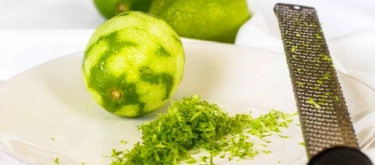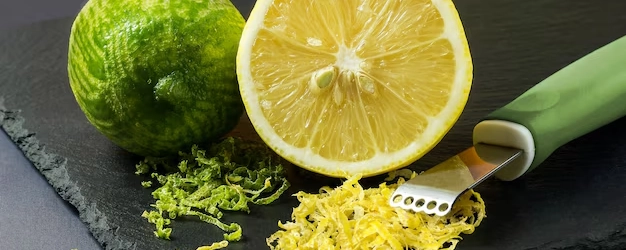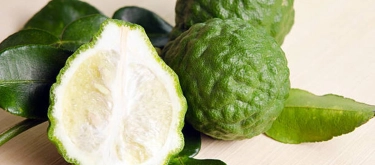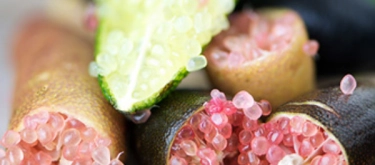Lime zest: Taste Profile, Aroma, Benefits and Health Risks
Lime zest—the finely grated outer peel of lime fruit (Citrus aurantiifolia, Citrus latifolia)—is cherished in global cuisines for its vibrant flavor, aromatic intensity, and culinary versatility. Originating from Southeast Asia, limes and their zest have become essential components of dishes in Latin American, Asian, Caribbean, and Middle Eastern culinary traditions. Lime zest adds freshness, complexity, and brightness to both sweet and savory dishes, beverages, and desserts.
Lime zest is suitable for vegetarians, vegans, and gluten-free diets. Individuals allergic to citrus fruits should avoid lime zest. Due to its high concentration of essential oils, excessive consumption may cause mild digestive discomfort in sensitive individuals.
What does Lime zest taste like?

Complete Sensory Description
Taste
Lime zest provides an intensely concentrated, vibrant citrus flavor, marked by bright acidity, pleasant bitterness, and refreshing tang. The initial burst of sharp citrus zestiness quickly transitions into a balanced bitter note, subtly enhancing depth and complexity without becoming overpowering. Its concentrated essential oils intensify the lime’s characteristic flavor, lending distinct, lively brightness with mild floral and herbal undertones.
Aroma
The aroma of lime zest is vividly fresh, citrusy, and invigorating. Rich in aromatic essential oils, particularly limonene, citral, and linalool, lime zest emits clean, sharp fragrances immediately upon zesting. These aromas combine vibrant citrus notes with subtle floral and herbal undertones, making lime zest especially valuable in culinary preparations requiring aromatic enhancement.
Texture
Lime zest has a fine, firm, slightly grainy texture when freshly grated. Its texture varies based on grating technique: finely grated zest distributes flavor smoothly, while thicker zest strips provide textural contrast, offering gentle crunch or chewiness, particularly noticeable in baked goods or garnishes.
Appearance
Lime zest appears bright green to pale yellow-green, reflecting the vibrant outer skin of the lime fruit. Finely grated zest has a powdery, fluffy texture, while coarser strips or curls offer visually appealing garnishes, enhancing both flavor and aesthetic appeal in culinary presentations.
In-depth Flavor Analysis
Lime zest’s distinctive flavor results predominantly from highly concentrated essential oils contained within the peel, notably terpenes and aromatic compounds. Limonene, the primary volatile oil, contributes intense citrus freshness and sharpness, dominating lime’s characteristic fragrance and flavor. Citral compounds (geranial and neral) further enrich lime zest’s flavor, adding distinctive citrus sharpness and slightly floral nuances.
Bitter elements in lime zest arise primarily from flavonoid glycosides (particularly naringin and hesperidin), concentrated in the outer peel. While zest bitterness is subtle and balanced when carefully grated, inclusion of white pith beneath zest increases bitterness significantly, negatively impacting flavor and culinary desirability.
Terpenes, primarily limonene and pinene, contribute vibrant citrus freshness and complexity, while aromatic aldehydes and esters, particularly citral and linalool, lend floral, herbaceous, and mildly spicy undertones. Citrus essential oils in zest are volatile, meaning zest flavor and aroma diminish significantly upon prolonged storage or exposure to air.
Environmental conditions greatly impact lime zest flavor. Limes grown in warm, sunny climates have more intense essential oil concentrations, offering stronger, more vibrant citrus flavors, whereas cooler climates produce zest with slightly subtler aromas and balanced citrus acidity.
Varieties and Culinary Applications
Key Lime Zest
- Intensely aromatic, bright acidity; iconic for key lime pie, desserts, seafood dishes, beverages, and marinades.
Persian Lime Zest
- Slightly milder but still vividly aromatic, popular in everyday cooking, beverages, marinades, desserts, and dressings.
Kaffir Lime Zest
- Intensely fragrant, herbal, slightly bitter; prized for Thai, Indonesian, and Southeast Asian cuisines in curries, pastes, soups, and sauces.
Culinary Versatility
Lime zest significantly enhances flavor in:
- Desserts: Cakes, pies, sorbets, ice creams, puddings, cookies, and pastries.
- Savory dishes: Curries, seafood dishes, marinades, salsas, dressings, and sauces.
- Beverages: Cocktails, juices, smoothies, teas, infused waters, and cocktails.
- Garnishes: Salads, seafood, beverages, cocktails, soups, or rice dishes.
- Seasoning: Complementing spices, herbs, seafood, poultry, or vegetables to enhance overall flavor complexity and freshness.
Selection and Storage
Selecting Quality Lime Zest
- Use fresh, organic limes with firm, brightly colored skin to ensure highest quality zest without wax coatings or pesticides.
- Avoid blemished, overly soft, or discolored limes, as zest quality diminishes significantly with fruit deterioration.
Storage Recommendations
- Use freshly grated zest immediately for best flavor. Store unused zest refrigerated in an airtight container for up to 1–2 days.
- Freeze excess zest in small, airtight containers or plastic bags for longer storage (up to several months), maintaining freshness and flavor.

Nutritional Insights
-
High in Antioxidants:
Rich in bioactive compounds (flavonoids, terpenes) with strong antioxidant and anti-inflammatory properties beneficial for overall cellular health. -
Vitamin C and Flavonoids:
Contains moderate vitamin C and abundant flavonoids, supporting immune function, reducing oxidative stress, and promoting general wellness. -
Essential Oils & Terpenes:
Presence of limonene and citral offer antioxidant protection, antimicrobial benefits, and potential mood-enhancing properties. -
Low-Calorie, Flavorful Ingredient:
Adds intense flavor and aromatic complexity without significant calories, fat, or sugar content, ideal for healthy cooking and dietary management.
Expert Insights & Culinary Tips
-
Flavor Pairings:
Lime zest pairs exceptionally well with herbs (cilantro, basil, mint), spices (ginger, cumin, coriander, chili), seafood, chicken, coconut milk, tropical fruits, creamy desserts, and beverages. -
Grating Technique:
Use a fine microplane or fine grater to avoid incorporating bitter white pith beneath the zest, ensuring optimal flavor balance. -
Enhancing Dishes:
Add lime zest near the end of cooking or immediately before serving, preserving delicate essential oils and aromatic freshness.
Interesting and Curious Facts
- Lime zest historically flavored foods and beverages worldwide, particularly prized in Mediterranean, Mexican, Caribbean, and Southeast Asian cuisines.
- Essential oils derived from lime zest have been traditionally valued in perfumery, aromatherapy, and cosmetic formulations due to uplifting fragrance and beneficial properties.
- Lime zest became essential in culinary practices historically as a preservation method, flavor enhancer, and aromatic ingredient, significantly impacting global cooking traditions.
Harm and Dietary Considerations
-
Citrus Allergies:
Individuals allergic or sensitive to citrus fruits should avoid lime zest consumption. -
Digestive Sensitivity:
Excessive intake of concentrated essential oils from zest may irritate sensitive digestive systems, causing mild discomfort.
Religious Dietary Considerations
Lime zest is universally acceptable in all major religions:
- Islam: Halal.
- Judaism: Kosher (Parve).
- Hinduism & Buddhism: Widely permissible.
- Christianity & Other religions: No dietary restrictions.
Final Thoughts & Sensory Journey
Lime zest delivers intense citrus freshness, aromatic complexity, and culinary sophistication. Its vibrant flavor enhances sweet desserts, savory dishes, and beverages, making it an indispensable culinary ingredient celebrated globally.
Resources
- McGee, H. (2004). On Food and Cooking: The Science and Lore of the Kitchen. Scribner.
- Citrus Processing: A Complete Guide. (1999). Springer.











